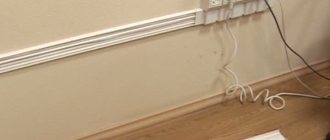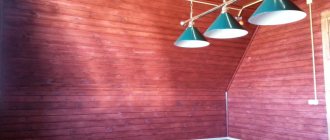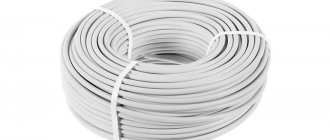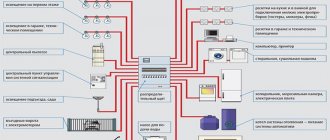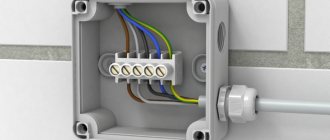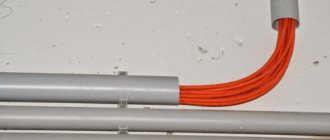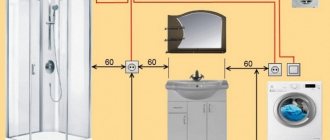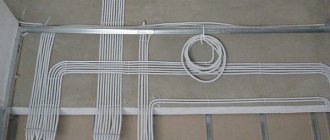Plastic boxes for electrical wiring have become very popular today. They have proven themselves to be a reliable solution for wiring power lines, and in a short time they allow you to organize and hide wires from view. A special advantage of this solution is the ability to carefully distribute wiring in rooms where repairs have already been made, and no changes are required. Yes, there was once a time when the presence of a wire on the wall was a source of pride, as if the country was being electrified! But today they have already sunk into oblivion, why plastic wire box and has become such an indispensable device.
Application of plastic boxes
Most often, plastic channels are used in everyday life. They have the following positive qualities:
- Low cost. It is associated with the low price of the manufacturing material itself - plastic, and the simplicity of the production process.
- Mass production of plastic products due to the development of modern technologies.
- Resistance to the negative effects of moisture, fire, acids, fungi, mold.
- Resistant to mechanical stress.
- Non-conductivity of electric current.
- Possibility of use in conditions of high humidity.
- Easy to connect and pull wires.
- No special tool required.
- A wide range of colors, thanks to which the box can organically fit into the color design of the room.
Despite the large selection of colors, you should understand that the plastic box will still be noticeable on the wall. For this reason, you also need to think in advance about how to lay plastic boxes for electrical wiring so that they do not spoil the appearance of the room.
How to choose the right plastic box
The determining factor that goes into making the right choice is the size of the box. In fact, a lot will depend on the number of wires that will fit into it. Plus a small amount of space. Therefore, the main boxes (from distribution boxes to branches) should be larger, and those going to sockets or switches should be smaller.
Next, you need to decide on the number of plastic elements. Here everything will depend on the length of the electrical wiring, taking into account that the box itself has a standard length of 2 m. By the way, in stores it is sold without trimming. In order not to make a mistake with the quantity, it is necessary to add 20% to the estimated length of the wiring.
Main dimensions of cable channels
The cable channel is also used as a decorative element that should fit into the interior design of the room. Let's just say that this material is mainly produced in white, so there is a fairly wide range here. With wood-effect models, the assortment is minimal. Although it is the “wood look” that is distinguished by its presentable appearance, which can fit into almost any interior.
Some manufacturers of plastic boxes for electrical wiring offer, as an addition, some decorative elements: plugs, corner adapters, tees, corners (internal and external). Therefore, the advice is to purchase cable channels with decorative fittings that enhance it. Wood-look fittings are also available.
When purchasing, you need to pay attention to the quality of the product. And if uneven ends are a small problem that can be hidden with plugs, then the poor quality of the locking connection between the panel and the lid is the number one problem that occurs quite often. That is, during operation the cover always falls off or, conversely, it is very difficult to install it on the lower mounting panel.
Decorative plastic box to look like wood.
A good quality product should be closed by hand without tapping. But the most interesting thing is the moment when the back of the box is installed, the cables are laid, and the lid does not close or falls out after installation. The most important thing here is not to overdo it. Many installers start hitting the lid with their hands or a mallet, after which not only it, but also the box itself cracks and falls apart before our eyes. So my advice is to purchase boxes for connecting wires from well-known manufacturers.
Installing plastic boxes is not only the correct choice, it is the correct choice of junction boxes, both in size and color. Everything should be in harmony. Pay special attention to the holes in the junction boxes where the wiring boxes will be inserted.
Plinth boxes for laying cables.
How to choose a cable channel for wiring installation?
Even an insignificant, at first glance, characteristic of the electrical box can be a key factor in choosing the required option.
So, what properties can be considered when purchasing a product:
- Material. Pay attention to safety, durability, level of protection in case of possible fire.
- Construction type. Cable channels for electrical wiring can be produced in the form of smooth or corrugated pipes, tracks, trays, etc.
- Specifics of application. The characteristics of systems used for industrial premises, private homes or equipment may differ significantly.
For example, more stringent requirements are imposed on the fire safety of cable boxes used for installing electrical wiring in wooden houses, while static structures are not suitable for wiring used in moving mechanisms.
In addition, pay attention to color. This factor is relevant in the case of open wiring, in which the elements of the cable channel are visible and must meet aesthetic requirements.
Cable channels are available in various colors. The most popular colors are white, steel, gray, black, natural wood color
Dimensions of plastic wiring box
Plastic boxes for electrical wiring vary in length, width and thickness. According to section 8 “Dimensions” of GOST R IEC 61084-1-2007 “Cable and special cable duct systems for electrical installations”, it is recommended to produce straight sections of cable channels with a length that is selected from the size range in increments of 0.5 m. Minimum section length should be 2 m.
This section also indicates that the manufacturer must indicate the value of the cross-sectional area (in mm²) inside the box, that is, the usable area that can be used when installing the cable. The width of the box depends on the number of wires that can be placed inside, as well as on the purpose of the product itself.
Dimensions of electrical installation cable channels in cross section
Mini-channels are produced by industry with the following typical cross-sectional dimensions:
- 10x10mm;
- 10x12mm;
- 12x12mm;
- 12x16mm;
- 16x16mm;
- 16x20mm;
- 20x20mm;
- 20x25mm;
- 25x25mm;
- 25x40mm;
- 40x40mm;
- 40x60mm;
- 60x80mm.
Trays of this type are designed to accommodate one or two wires.
Floor boxes are produced with the following cross-section:
- 160x65mm;
- 50x12mm;
- 92x20mm;
- 75x17mm.
Trunk plastic boxes for electrical wiring have the following typical cross-sectional dimensions:
- 20x10mm;
- 30x10mm;
- 40x25mm;
- 25x25mm;
- 40x40mm;
- 40x16mm;
- 80x60mm;
- 100x60mm.
For the plinth type, the size is determined by the width of the cover (diagonal wall) and is usually made 50 or 70 mm. You can also find the sizes of skirting boards with cable channels, which are given according to the height and width of the base. In this case, the most popular are 50x50 mm skirting boards. They allow you to place several wires in one product. Trays measuring 100x100 are designed to accommodate three-wire wires.
Dimensions for corner structures depend on the dimensions of the internal part of the product. The most popular size is 40x40 mm. Depending on the purpose, flexible corrugated models are available in the following diameters: 16mm; 20mm; 25mm and 50mm.
- 16mm pipes are used for laying lighting and telephone cables;
- to create outlets for sockets or switches, use 20mm corrugated channels;
- Corrugated cable ducts with a pipe diameter of 25 mm are used between electrical panels or distribution boxes.
Calculation of the size of a plastic box for electrical wiring
Before you purchase cable channels for installing electrical wiring, you must first draw a layout diagram of the structure in the room, indicating the type of cable channels and the length of each section. After this, determine the required size of each type of tray. To calculate the size of the box, you need to know the cross-section of the wires and their number.
It is recommended to take a cable channel with a small margin in length (10%) and width.
The length reserve takes into account the additional costs that arise during installation in places with corners, as well as in the event of material damage. It is also advisable to have free space inside the box, which may be needed when laying additional electrical cables.
There is no need to purchase a wide tray if you initially plan to lay only one cable, since its price also depends on the width of the product. Usually the calculation is carried out taking into account an increase in the number of wires by 2-3 pieces.
Also, taking into account the “Rules for Electrical Installations”, in the case of multi-layer filling of plastic cable channels, the sum of the cross-sections of all conductors located in them should not exceed 40% of the cross-section of the product itself in the case of using a box with a lid or 30% in the case of a blind box.
Table for calculating the minimum dimensions of cable channels
| single-section | two-section | three-section | |||||||||
| 10x22 | 10x30 | 10x22 | 10x30 | 15x54 | 10x40 | ||||||
| number of wires in one section | |||||||||||
| 1,5 | 10 | 12 | 3 | 3 | 5 | 5 | 19 | 13 | 5 | 4 | 5 |
| 2,5 | 7 | 10 | 2 | 2 | 3 | 3 | 13 | 13 | 3 | 3 | 3 |
| 4 | 4 | 8 | 1 | 1 | 2 | 2 | 10 | 13 | 2 | 2 | 2 |
| 6 | 2 | 3 | 1 | 1 | 1 | 1 | 5 | 5 | 1 | 1 | 1 |
Cable channels are delivered to hardware stores in packages. Depending on the size of the trays, the packaging differs in the number of products and, accordingly, in the total footage. To calculate the total length of cable channels in a package, the number of products is multiplied by the standard length of one tray (2 m).
A table of parameters for one package, depending on the size of one box, is shown in the figure. Parameters of one package of electrical boxes, depending on their size
When purchasing boxes, it is advisable to purchase fittings for them (plugs, corners, branches, etc.).
Also, for household purposes, it is better to purchase single-lock products, as they will last longer than double-lock ones. This is due to the fact that the wall thickness of single-lock structures is greater, and, consequently, the products themselves are more durable.
Correctly sized cable channels will allow you to quickly install the system, and the additional space inside the box will make it possible to easily add wires to the system without the use of additional trays.
Installation rules
The installation procedure depends on whether shaped products - corners, branches and plugs - will be used or not. If they exist, the manufacturer gives clear recommendations about what distance should be left for proper installation. They should be followed to the nearest millimeter. Then everything looks neat. We will talk about the basic rules for installing cable channels of the usual type below in more detail.
How to choose a size
If you decide to route wires into cable channels, first you need to decide what size they are needed. Dimensions are selected based on the number and size of conductors that will need to be laid and some reserve added for the future - so that if necessary, one or two more wires can be laid.
When choosing a size, you need to take into account the number of cables that will need to be laid
The number of conductors in a cable channel is not standardized. The main thing is to be able to close the lid without problems. A limitation may be the need for separate placement of power and low-current cables. In this case, select the cross-section so that there is at least a small distance between the groups of cables.
Installation procedure and features
According to the rules, wiring is laid horizontally and vertically; inclined installation is permissible only on stairs. In other cases, the rules are not deviated from when wiring is open. To obtain an even cut when installing plastic cable channels with thin stacks, use metal scissors or others, but the cutting edge must be sharp. Aluminum and metal trays are cut with a hacksaw. Thick plastic can also be cut with the same tool - there will be a smooth edge and the profile will not wrinkle.
If you need a piece of a certain length - for a outlet, for example, you need to cut it in this order: snap the lid, align the edge, apply marks on the lid and body at the same time. Then you can cut it separately. With this order, the length of both products will be the same.
Please note that when passing the corner, the lid is not cut into two parts, but only the side walls are cut so that it can be bent. Do not forget that when going around the outer corner, the cover should be longer than the tray; in this case, it is better to mark the places of cuts on it after the cable channel body is secured.
Rules for installing plastic cable trays
The cable channel is attached to a non-wooden surface using nails with a wide head (screws can be used), or to plaster or plasterboard walls using self-tapping screws. For installation on brick or concrete walls, installation with dowels is required. The fastening step of the fasteners is about 60-70 cm; at the ends of the profile and at the joints, the fasteners are installed at a distance of 3-5 cm from the edge.
If two pieces of cable channels are joined, the cover must be positioned so that the joints of the housing and the cover do not coincide. Otherwise, the joint will be too noticeable and an unevenness may form, which will further emphasize the joint.
Order of laying wires
We lay conductors in the mounted housings. To prevent the walls of the cable channels from sagging, we install supporting jumpers with some steps, and then snap the covers. At this point, the installation of wiring in the cable channels can be considered complete.
What color solutions are there for cable channels?
The choice of cable channels depends on the overall interior design. There is a large assortment of white products, but colored wire boxes are also often used. Fittings must be used in suitable colors. Different types of tees, adapters and plugs must match the color palette of the cable channels. Products painted to resemble wood are especially popular. Such designs are used in the arrangement of wooden houses and baths.
The color palette includes more than 10 items. Colors such as beech, pine and oak are often found.
Depending on the interior of the room and the color scheme used, the color of the wiring boxes is selected. The use of a colored cable channel allows you to select the material taking into account the basic design of the room. The most popular products are white or wood-look, as they are used to decorate office premises. An unusual version of the cable channel in black.
The beige color palette is in demand, especially the wood texture.
Floor and baseboard cable channels
Floor and baseboard cable ducts are a separate category. All floor and plinth cable channels also have their own additional elements that simplify the laying of highways.
Plinth cable channels are hollow inside and can accommodate many wires. This is an excellent option for laying antenna or computer cables.
Pros of cable channels
- There is no need to groove walls to lay wires.
- The laid cable is always open for inspection - you can always lay an additional line nearby.
- Despite its apparent softness, the cable channel additionally protects the wires laid in it from mechanical damage.
- The installation of the main line is carried out as quickly as possible.
- Various forms of cable channels allow you to fit the external electrical wiring line into most interior solutions.
Cons of cable channels
- Sometimes cable channels do not look at all in the interior of the room.
- The box “takes away” several centimeters of space from the wall.
- It is easy to accidentally snag the cable channel - knock it off the fastening or break it.
- High-quality installation is only possible with the use of a large number of additional accessories - turns, branches, etc.
Methods of using cable channels for laying open electrical wiring
A wide range of components for electrical wiring allows you to implement the most complex projects. Installation of the wall box is carried out taking into account the height of the sockets, junction boxes and switches. For open spaces, designs of wall and floor cable ducts made of metal are used. This provides protection from the effects of electromagnetic vibrations. Such options are relevant when installing information wiring.
Before proceeding with installation, it is worth understanding the basic elements of the electrical circuit.
Angled cable channel
Used for mounting LED strip lighting. Most often, such products are made of aluminum, and the lid is made of heat-resistant plastic.
The corner cable channel is used to fill the junction of the main line in the corners.
For the home, a flexible cable channel for wires is often used. Lightweight metal models are also used. There must be enough space inside the case for a certain number of cables. It is important to check the availability of the necessary accessories for the cable products.
Flexible designs allow you to disguise a large number of wires. When choosing products, you need to count all the locks, mounting fasteners and plugs on the spot.
Electrical wiring can be organized according to an open circuit using the following types of electrical boxes:
Wall box for wires with double-sided and one-sided lock.
Wall Channel Installation
- floor plinth with separate sections for low-current wires;
- ceiling material;
- designs of cable ducts on the floor with protection from mechanical impact;
- corrugated pipes and trays used in utility rooms or for external facades.
Outdoor cable channels are used for the local area.
Flexible structures can be used for the street.
Installation of wall boxes is carried out using self-tapping screws. They should be installed at certain intervals. The load is determined by the number of wires inside. To fix it on a wooden surface or on drywall, it is necessary to screw it in every 40-50 cm. If the walls are uneven, then the distance may be less to hide flaws.
To work with a brick or concrete wall, installation is carried out using dowels. To work, you will need a hammer drill with a nozzle with a diameter of 6 mm. The simplest fastening option is liquid nails, which are construction adhesive.
Wall mounting option
Floor channels will allow you to disguise any wiring so as not to spoil the interior. In this case, the structure is combined with the baseboard. Before installation, markings should be made on the walls and floor. Interestingly, plastic cable channels are mounted not to the floor, but to the wall. Installation is carried out using screws, liquid nails and dowels.
Installation of a floor skirting box
Installation of wiring in the channels is carried out after completion of finishing work. Markings for the cable mesh are marked on the walls. Laying is done from the distribution panel. First of all, main lines are installed, and then branches from them. If the channels do not have holes, you can make them yourself.
Installation of a wall channel with wires. The channel section is fixed to the wall. In this case, the line should be positioned in the center of the holes. After this, fastening with dowels is carried out. After installing the connecting parts, the box is cut to the required length.
The features of installing a cable in a box are shown in the video:
Kinds
Cable channel manufacturers supply several types of these products to the market (Fig. 3):
- parapet;
- mainline;
- baseboard;
- floor;
Depending on the priority of the functional purpose, you can select boxes that are most optimally suited for laying cables in specific conditions, taking into account safety requirements, the choice of location of the box and wishes for its design.
Based on the design features of electrical boxes and the materials used for their manufacture, products are divided according to the following criteria:
- by type of construction;
- installation method;
- material used in manufacturing.
Separately, it should be noted this type of cable channel, such as a cable tramp or a hose bridge. It is used for laying high-voltage wires, cords, cables, hoses through the roadway of yards, summer cottages, etc. areas where high mechanical loads are possible. A cable burl (bridge) is a pallet with laying grooves along which the corresponding communications are laid.
The oval surface of the arm bridge allows cars to pass through it without hindrance and does not interfere with the passage of pedestrians. The product is made of hard rubber or polyurethane.
The use of a specific type of cable channel is determined by the problem that has to be solved, taking into account the parameters of the future network. The correct choice will simplify the installation of wiring and ensure the necessary level of safety of the cable route during its operation.
Let us characterize the main types of electrical installation boxes according to their characteristics.
By design
The common features for all types of channels is that they all consist of a box and a cover. It is the presence of the cover that distinguishes the cable channel from the tray. The design features of a single mounting box differ in the shape of the tray, the profile and design of the lid locks, and the presence of additional accessories that simplify installation and improve the appearance of the products.
Structurally, the products differ in the shape of the tray. It can be round (tubular) or rectangular. Corner boxes, as well as the category of plinth cable ducts, are characterized by a triangular tray shape. The triangular cable channel fits perfectly at the junction of the wall and ceiling. If necessary, it can be easily hidden under a decorative baguette. There are perforated cable channels (Fig. 4), in which the base walls are not solid, but with slots of a certain shape.
Rice. 4. Perforated cable channel
Such structures are used for installation on the facade surfaces of buildings. Perforations provide good ventilation of cable lines, which prevents the accumulation of condensate in the channels. This increases the service life of external electrical wiring in conditions of frequent temperature changes.
There are also flexible cable channels. They consist of hinged elements that can rotate in three dimensions. With the help of such boxes it is convenient to lay the cable, going around the protrusions and recesses. Using a flexible cable channel, you can easily connect the wiring to the table or create a new highway in any room.
By installation method
Using cable channels of a certain design, underground cable lines are installed, including the laying of wires in the structures of poured floors. There are varieties of models for outdoor wall mounting and for laying routes indoors.
The internal structures have an improved design. The joints of their lids are almost invisible. They are equipped with a polished decorative cover, the color of which can be matched to the colors of the walls and ceilings.
The print on the covers of the floor cable ducts imitates the texture of different types of wood. Triangular structures can be used instead of plastic baseboards. If necessary, the boxes can be hidden behind panels of plinth structures.
The profiles of cable ducts installed under the ceiling can have different shapes. They are attached either with screws or for their installation using fasteners that are included with the devices. To mask the joints, docking units, external (Figure 5) and internal (Figure 6) corners are used.
Rice. 5. Outer corner
Rice. 6. Inner corner
Branches from highways are laid in flat boxes along the surface of the wall. The width of the tray is selected depending on the number of wires and their thickness.
According to the material from which they are made
Strictly speaking, there is little choice here: metal or plastic. In the manufacture of metal boxes, galvanized steel sheets or aluminum profiles are used. Figure 7 shows a metal box.
Rice. 7. Metal cable channel
Steel structures are usually used for laying underground highways. Aluminum products are used indoors when it is necessary to emphasize the expressiveness of an avant-garde or other modern interior style.
The use of metal cable ducts is dictated by the requirements for the strength of this material and considerations regarding fire safety. Although the cost of metal products is quite high, they are often the only viable option for laying cables.
Wire products, unlike closed steel boxes, allow you to visually monitor the condition of the wiring. In addition, they provide natural cooling for laid cables. This is very convenient in production shops where wiring is subject to significant stress. Figure 8 shows a wire conduit.
Rice. 8. Hanging wire cable channel
The popularity of PVC cable ducts is due to their low cost and versatility. The presence of decorative covers for all occasions also contributes to their widespread use. The flexible cover, even with a double lock, is quite easy to remove if necessary.
Some models use transparent plastic in their designs. You can place an LED strip in the box to illuminate the ceiling, or for other decorative lighting of the room.
Wall mounting methods
Liquid nails can be used as a temporary fastening method. Correct fixation also affects the life of the product. There are several ways to attach a cable channel to the wall:
- Self-tapping screws. The laying step is calculated in advance, which depends on the load on the box, the number of wires, and the cross-sectional dimensions. The average step is 50 centimeters. If the wall has an uneven surface, the step should be reduced to visually hide the gaps and defects of the wall. There is no need to take long screws; a product 40 mm long is enough. Application: wooden and plasterboard walls.
- Dowel-nails. Typically used for installation on concrete and brick surfaces. On the base of the cable duct, holes should be made every 50 cm with a diameter of 6 mm. The channel should be attached to the wall and, using a pencil, place the places where the fastening will be made. In these places you need to drill holes, then attach the box and drive in dowel-nails.
- Bedbugs. These are special mounting clamps that are used for fastening to metal up to 2 mm thick or to aluminum profiles.
- Liquid Nails. They are used when the methods described above cannot be used. Example - tiles in the bathroom, smooth metal surface. It has poor reliability, so it is used as a temporary method of fastening.
The best method depends on the wall material.
Sequence of work for installing an electrical box
Installation of the mounting box occurs in several stages.
- Preparatory work.
- Box fastening.
- Laying cables.
- Cover fastening.
The lion's share of the preparatory work for installing a box for electrical wiring lies in reasonable planning of the location of the cable network.
Following safety rules, it is recommended to avoid laying the route in places of water supply and gas equipment, near heating devices. Do not also forget that in the event of an emergency, smoke spreads through the cable duct system, which can cause harm to human health. All this must be taken into account when developing an energy supply project.
Directly on the ground, the installation area of the boxes must be pre-marked. At the same time, the vertical and horizontal sections of the route are observed. It is preferable to make turns and additional layers at right angles, over the shortest distance.
Installation of the cable route is carried out in the following sequence:
- Disassemble it by removing the top cover.
- Attach the box to the wall. The distance between fasteners is accepted to be at least 0.5 m. Many products have holes for fastening, they can be used, but it is always worth making allowances for the specific situation. It is best to fasten the box every 50 cm
- For fastening, you can use screws, dowel-nails, anchors or clamps. Thin and light plastic boxes can be secured with glue or double-sided tape. But at the same time you need to ensure that contact with the wall surface is reliable. The surface of the wall must be cleaned and degreased so that contact with the plane of the box is as tight as possible
- Laying wires. The wires can be laid one at a time or in a bundle tied in several places. It is advisable to label each cable or install special tags to make the work easier for those who will deal with the wiring diagram in the future. Wire markings must contain clear symbols and be protected from abrasion over time.
- Installing the cover. It is recommended to lubricate the locking grooves or latches with a special sealant. This will enhance the protective properties of the lid and prevent the entry of dust and moisture. The edges of the mounting box can be coated with sealant before closing.
Cabling
It seems like a simple process, but even here there are some nuances. We recommend choosing cable boxes that have longitudinal partitions in their design. You can easily lay cables in them, so to speak, floor by floor, so that they do not interfere with each other. If the cable channel is a box without partitions, then pay attention to the quality of the cover fastening. It is important here that it is not squeezed out under the pressure of the weight of all the laid wires.
Covers cannot be joined at the joints of the rear panels; installation must be done offset.
Box designs
The sizes of plastic boxes, as well as the designs, vary in width. There are trays in which several cores are laid at once. They are separated by internal partitions. Lids can be separate or one for the entire box.
Short size, used for laying wires to a computer, telephone or TV. Wiring can also be installed on the floor. Oval protection does not interfere with movement indoors.
Plastic boxes securely cover wires and can look aesthetically pleasing anywhere. Under the ceiling they look like a plinth. Large boxes, in the form of a parapet, can be seen in the entrances of residential buildings and institutions.
Advantages of an electrical box
The main advantages of placing wiring in a cable channel are as follows:
- ease of installation work;
- mobility;
- availability of communications for modernization or repair;
- Possibility of installation in well-finished rooms. The electrical network, packaged in a box, has a completely acceptable aesthetic appearance;
- scalability. If you correctly calculate the size of the box, there is always the possibility of laying additional cables and wires if the need arises in the future.
Due to the flexibility of the installation process, the technology of using electrical boxes has become widespread in both the industrial and residential sectors. If any problems occur, the suspicious section of the cable network can be easily opened to eliminate the problem.
Among other things, plastic boxes have a low cost and significantly reduce the risk of mechanical damage to wiring. They reliably protect power lines from open contact with a person for whom electric current poses a danger.
Box vs groove
First, let's find out why a plastic wire box is more convenient than hidden wiring in grooves and in what ways it is inferior to it.
Advantages
- The minimum amount of dirty work and the complete absence of so-called “wet” work (associated with the use of building mortars). All you need to do is drill a series of holes to attach the cable ducts;
- Extremely simple connection of new sockets. If you need to install a new stationary electrical appliance in the room, there is also no problem: just open the box, strip the insulation and install a couple of terminals for the wires;
Need another outlet? No problem!
- You will never hit a wire with a drill during repairs. At the same time, you do not need to keep a wiring drawing indicating all the distances: it is right in front of your eyes, in the box;
- Repairing or replacing a section of wiring will also not cause any problems. You don’t have to re-drill the walls and seal the grooves with putty: just open the plastic boxes intended for wires.
Flaws
- The boxes are forced to use only overhead sockets, which is not always convenient;
Surface-mounted sockets and switches are used with open wiring
- Strobes benefit from an aesthetic point of view: the surface of the walls is not decorated with dubious decorative elements;
However: plastic boxes for laying wires can be built into the baseboard. In this case, only the notorious outdoor sockets provide exposed wiring.
- A groove in a main wall provides noticeably better heat removal: as you know, any conductor with non-zero resistance heats up when current flows through it.
The material of the main wall provides effective heat removal
The video attached to the article will help you learn more about the features of their use for wiring.
Where to buy cable channels for electrical wiring: types, manufacturers and prices
You need to understand the manufacturers of such products if you want to buy cable channels for your home. Many companies offer high quality boxes. In such a situation, it is important to distinguish a fake. You need to ask the consultant for the necessary documents for the products.
Let's take a look at some branded manufacturers:
- Hager. The German manufacturer specializes in office products, but due to the high quality of the boxes, they are also used in residential areas. The products are made in a modern design and are suitable for many interiors. The tehalit.BRP series is used for laying main lines. Universal models are boxes of the tehalit.LFF series, which are characterized by simple installation;
- Legrand. The company offers profiles in different sizes and widths up to 220 mm. There can be up to three sections inside the case. The cable channel is equipped with two types of partitions. Some are mounted in a special groove, while others are flexible and glued to the wall.
- DKS. This domestic manufacturer produces 4 types of channels. Wall-mounted ones have a flat lid and are compact in size. Floor boxes are equipped with turns. They are easily connected to each other. The mini channels come in dark brown and white;
- Schneider Electric. The manufacturer offers the Ultra series with two types of channels. Switches and sockets are mounted in modular frames. Mini channels have a U-shaped cover. For quick installation, you can choose products with self-adhesive tape.
We suggest looking at some types, sizes and prices of cable channels in our table.
Table 1. Average cost of cable channels.
| Elekor 2m IEK white | Suitable for low-current, information and power communications in offices and residential premises. | 36 |
| Ruvinil PKK 16×16×0.8 m | The texture of the material is wood, the color is oak. The material used is self-extinguishing polyvinyl chloride. | 76 |
| Cable channel 25-25 mm. Mutlusan (pack of 100 m) | The material is made to look like light wood. | 2007 (per package) |
| Cable channel 20×10 mm (160 meters per package) T.Plast | Product material is white plastic. | 1390 (per package) |
| Hager LFF channel 60×110 | The structure is made of white plastic. | 422 |
| Legrand DLP with flexible cover 105×50 | Material white PVC. | 695 |
| Perforated DKC 25x40, 2 meters. | The design has a corrugated structure. Made of high quality plastic. | 456 |
Elekor 2m IEK whiteCable channel 25-25 mm Mutlusan packaging 100 mCable channel 20×10 mm T.PlastLegrand DLP with flexible cover 105×50Perforated DKC 25×40
When choosing a cable box, you need to take into account the size, appearance, manufacturer and cost of the product. Properly selected cable channels will disguise unsightly wires and become a great addition to a modern interior. We hope that our article is useful to you. If you want to add something, write in the comments.
Types and sizes
There are several types of cable channels . They do not shine with a wide variety of forms ; only the trays for special conditions of use, the standard size and the material for their manufacture differ.
Cable trays in baseboards
For the production of cable systems at home, this is the best option. The wires are placed in the body of the baseboard. In this case, you can avoid labor-intensive and dusty work on cutting hidden wiring and get a beautiful and reliable power supply circuit at the output. Aesthetics are achieved through an expanded color range of finished products and imply a creative approach to the process.
A wide range of additional components are available for such products, which will help make transitions, turns and route endings unnoticeable. There are plinth fittings for various cable outlets, which allows you to mount sockets, connectors and adapters at floor level.
Sizes vary slightly among different manufacturers:
- The Legrand company produces two series of decorative cable ducts for external wiring. This is a Mini collection with dimensions 20 by 12.5 mm, 32 by 12.5 mm, 40 by 12.5 mm, 32 by 16 mm, 40 by 16 mm, 60 by 60 mm, 60 by 20 mm, 75 by 20 mm and DPL with dimensions 35 by 80 mm; 35 by 105 mm, 50 by 80 mm, 50 by 105 mm, 50 by 150 mm, 65 by 150 mm.
- SL Hager offers a choice of the following dimensions: 20 by 50 mm, 20 by 70 mm, 15 by 100 mm, 25 by 100 mm.
Floor boxes
Such installation products have a semicircular cross-section. This was done to ensure human safety when moving, since the name suggests that such channels are attached to the floor surface. Such systems are used mainly to replace carriers and extension cords. It turns out beautifully and is not dangerous: it is not difficult to trip over a dangling wire.
Trade enterprises offer a choice of products with dimensions: 50 by 12 mm, 75 by 17 mm, 92 by 20 mm, 160 by 65 mm. Standard colors include white, gray and black channels. You can choose turns, bends and transitions for them. The lid snaps into place. Cable channels for the floor have a degree of protection IP40.
Parapet profile
Such cable trays are called trunk cable trays. They differ from baseboard ones in shape and installation location. They do not have a variety of colors and are available in white or milky color. All kinds of fittings are available to facilitate installation. Most often they are used for laying cables in the office or in production. Often such products are used when installing air conditioners.
The standard width of parapet boxes is 80, 100, 120, 150 millimeters, wall height is 40, 55 or 60 millimeters.
There is a version of these trays with smaller sizes. There are no additional accessories available for them, and during installation the box is cut out at the desired angle. A wide variety of sizes allows you to mount the combination for any type of cable:
- Width from ten to one hundred millimeters.
- Height - from ten to sixty millimeters.
Angled cable management systems
For installation work at the joints of walls or ceilings, there is an angular cable channel. They are made in the likeness of a ceiling plinth and at a quick glance they resemble part of the decor. Their dimensions are limited and are not suitable for laying a large bundle of cables. There are no docking points for them. The most common channels are forty by forty millimeters in size.
Corner trays with a transparent lid are suitable for laying lighting lines from LED strips. Suitable for illuminating furniture.
Metal cable ducts
Such boxes are used for installing wiring in wall cavities - frame or panel houses. They are used in production to connect various equipment. The material is usually galvanized metal. For connections or bends, special products with screw fasteners are used.
Such structures are widely used for laying wires for various purposes inside suspended ceilings. With the help of such trays, the process of installing power supply circuits is accelerated and simplified, since the standard length (three meters) allows you to assemble long sections of the main line at once, without resorting to various fasteners. The width of the tray is from fifty to six hundred millimeters or more, the height of up to one hundred millimeters allows you to lay any number of wires.
Flexible channels
Such channels are also called track channels because of their appearance, reminiscent of a tank caterpillar. The main purpose of such products is to provide power to the moving elements of the electrical circuit. There are also flexible channels in the form of a corrugated PVC tube. It is used mainly in industrial facilities. The varied diameters of the products allow for laying cables of several sections. The production material for flexible trays is non-flammable plastic.

